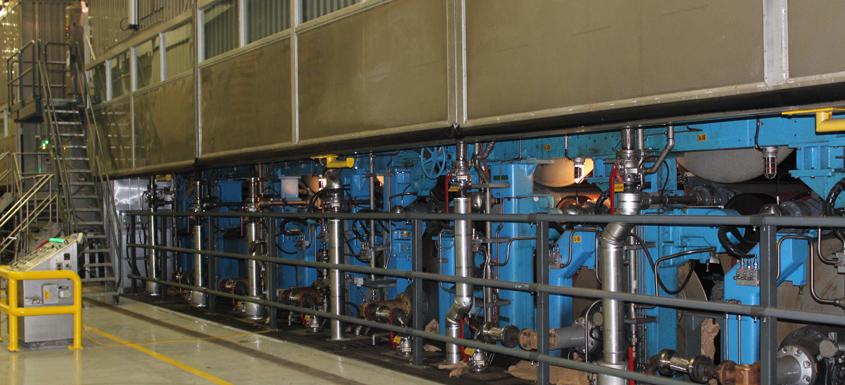FPInnovations’ partnership with Natural Resources Canada’s CanmetENERGY continues to stimulate the Canadian Pulp and Paper (P&P) industry by focusing on energy management, process debottleneck to facilitate the diversification of products, and reduction of greenhouse gases emissions (GHG).

Energy efficiency and process debottlenecking have become essential to the P&P industry in Canada to maximize mill assets operation and utilization and to facilitate the integration of new technologies as they transition to become carbon-negative processes and biorefineries. Energy efficiency is a key pillar of Canada’s climate change policy [1]. The P&P industry is one of the most energy-intensive sectors in Canada. Energy consumption in this sector represents 15% of the Canadian industrial sector secondary energy use [2]. Although the industry covers most of its energy requirements with biomass fuels, fossil fuels are still used to produce heat and power, and for calcination of lime mud in the kraft process.
Pulping processes are deeply connected with many interactions between the main process departments, and with the energy systems (water and steam). Therefore, a global process perspective is required to analyze the systems interactions, and the maximum potential of operational improvement to develop optimal solutions’ strategies. The improvement roadmaps consider low-cost options in the short-term to improve process operation and energy efficiency while considering the medium/long-term perspective to debottleneck the process and substantially reduce GHG emissions.
A systematic approach has been applied to identify, quantify, and classify process bottlenecks and operational and energy inefficiencies at the departmental and mill-wide levels. The approach focuses on maximizing the capacity of a process while improving its overall energy and operational performance. The approach consists of four steps. First step focuses on the communication with the mill management to establish improvement targets (e.g., pulp production increase targets, operating cost reduction, energy and GHG emissions reduction, biorefinery integration, etc.). Those targets would guide the debottlenecking approach and process optimization. Then, bottlenecks are identified, screened, and ranked. At this step, each department/process is compared to the established targets and thus, pinpoint the existing bottlenecks and inefficiencies. The next step is process diagnosis, which uses multivariate data analysis, process simulation, unit operations best practices, and root-cause analysis to identify the interactions between different process bottlenecks and operations. In the last step, the improvement solutions are established, and a roadmap of measures is proposed to reach the desired targets.
The approach has been successfully applied in several Canadian mills. For one of the mills, operational projects, and projects with low/medium capital expense (CAPEX) would result in up to 6% pulp production increase with EBITDA potential >1M$/year. Energy reduction projects with no capital investment required were also identified and saved the mill 0.3- 0.5 M$/y. The approach was also applied in another mill with the objective of optimizing the efficiency of its existing energy recovery assets towards reducing GHG emissions. It resulted in a reduction of 9.5 kT of CO2eq/y (25% of their total non-biogenic GHG emissions) and potential savings of 0.7M$/y (half the savings could be achieved with non-or low capital investment). For another mill where energy consumption had previously been optimized, and bottlenecks had been identified and addressed, the approach was tailored to focus on in-depth data evaluation to identify parameters to be monitored to maintain and improve overall process efficiency. These results show that there are still opportunities in pulp mills to improve operational and energy efficiency to reduce costs and maximize overall efficiency.
Assessing the state of existing mill assets and operation is critical for improving mill competitiveness and reducing environmental impact. The systematic approach applied by FPInnovations and Natural Resources Canada’s CanmetENERGY provides Canadian Pulp and Paper mills with the guidelines and tools needed to make short and long-term strategic decisions that can improve process operations, energy efficiency, and substantially reduce GHG emissions.
For more information, please contact Enrique Mateos-Espejel (
|
[1] Environment and Climate Change Canada, "Pan-Canadian Framework on Clean Growth and Climate Change," Environment and Climate Change Canada, Gatineau, 2016. |
|
[2] NRCAN, Office of energy efficiency, [Online]. Available: https://oee.nrcan.gc.ca/corporate/statistics/neud/dpa/menus/trends/comprehensive/trends_id_ca.cfm [Accessed 20 October 2021]. |
Source: FPInnovations













